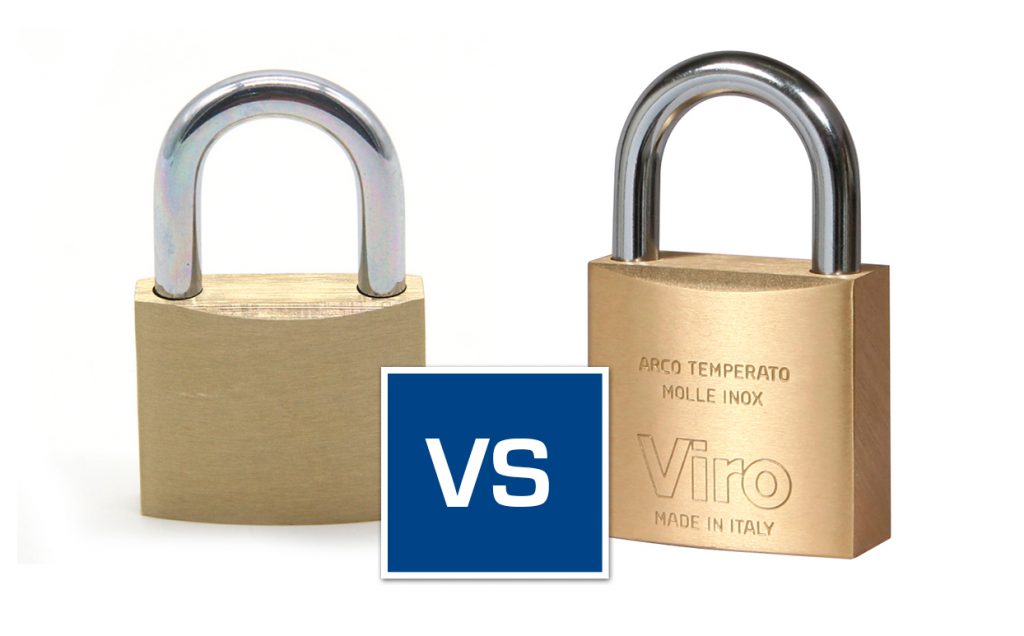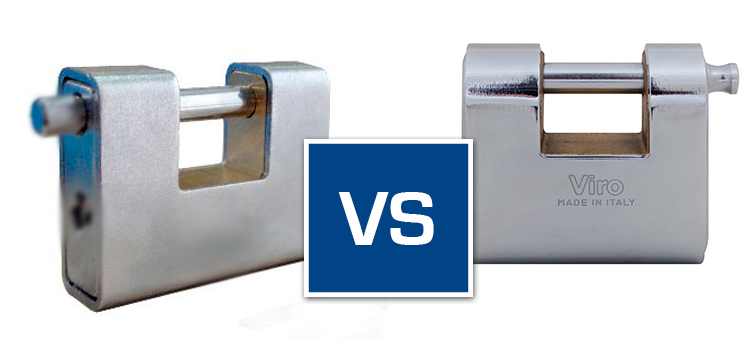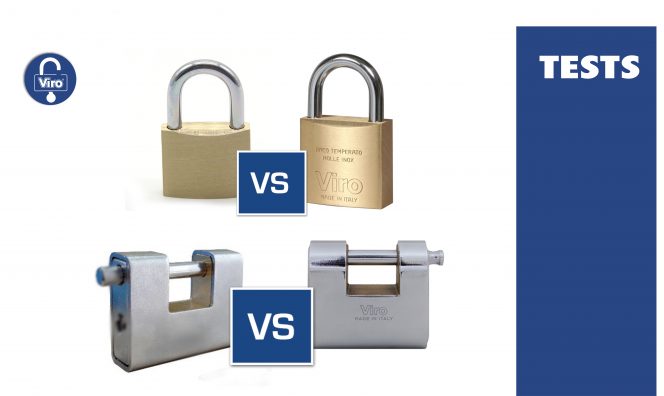In this short series of articles we will discover how some of the best Viro padlocks and chains on the market react to salt spray and cut and impact resistance tests, compared to imitation ones.
The first blog is dedicated entirely to the tests carried out on the padlocks, in particular the Rectangular padlock (Viro art. 304) and the Armoured padlock (Viro Panzer).
In the second blog the focus will be on the chains, the ones commonly used for the protection of motorcycles and bicycles, in particular the Bloccacatena, the Supermorso and the Morso with chain.
On the other hand, the third and last blog of the series will present a brief analysis of the specific differences between Viro and imitation products which inexorably lead to the results highlighted.
The tests to which the security items have been subjected are:
> Corrosion resistance in salt spray test
During the test, the samples are exposed to a highly saline and corrosive environment which, in a relatively short time, acts on the products and simulates years of use (for example, every hour in salt spray corresponds to about a week of continuous exposure to weather conditions).
> Cutting strength test
Load cells are used for these mechanical strength tests which measure the force (expressed in kg) necessary to break the part analysed.
> Impact resistance test
This impact resistance test reproduces a blow with a 6.5 kg sledgehammer from a height of 1.4 metres in the space below the padlock shackle or lock-bolt. In this way the resistance to violent attacks and the construction quality of the tested products can be verified.
TESTS ON PADLOCKS
- RECTANGULAR IMPORTED PADLOCK vs VIRO MADE IN ITALY ART. 304

Viro rectangular padlock art. 304 vs. imported padlock: salt spray resistance test
The article shows the example of a Made in Italy padlock, which has been subjected to 18 hours in salt spray. At the same time, an imported padlock, widespread on the Italian market but not produced in Italy, undergoes the same test, under the same conditions. Find out in the dedicated blog why the two padlocks react differently to the same experiment!
Viro rectangular padlock art. 304 vs. imported padlock: shackle cutting resistance test
The shackle of the padlocks is the part most frequently attacked by criminals, often with the use of bolt cutters. A very relevant test is therefore the shackle cutting resistance test. Find out in this blog how many kg the padlock art. 304 is able to withstand compared to the imported one examined.
- ARMOURED IMPORTED PADLOCK vs VIRO MADE IN ITALY PANZER

Viro Panzer padlock: salt spray and impact resistance tests
This video shows how the Viro Panzer reacts to the two tests mentioned.
Salt spray test (7:05 mins.)
Impact resistance test (7:42 mins.)
Viro Panzer padlock vs. imported armoured padlocks: salt spray test results
This blog provides details of the individual reactions of the Viro Panzer and three products imported by competitors from the Far East after having undergone the salt spray test.
It is clear that the statement that “one padlock is just the same as any other” is not true; on the contrary it is obvious that the Made in Italy padlock is worth more!
